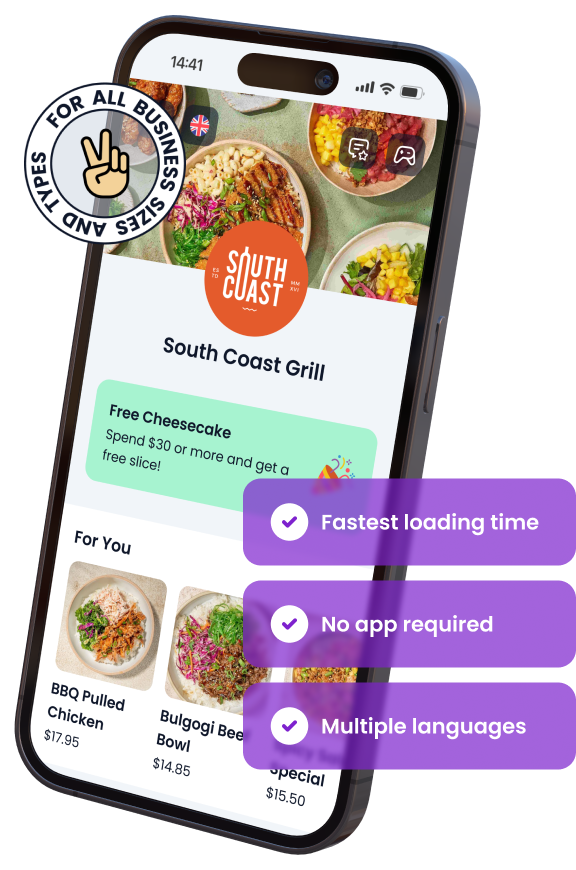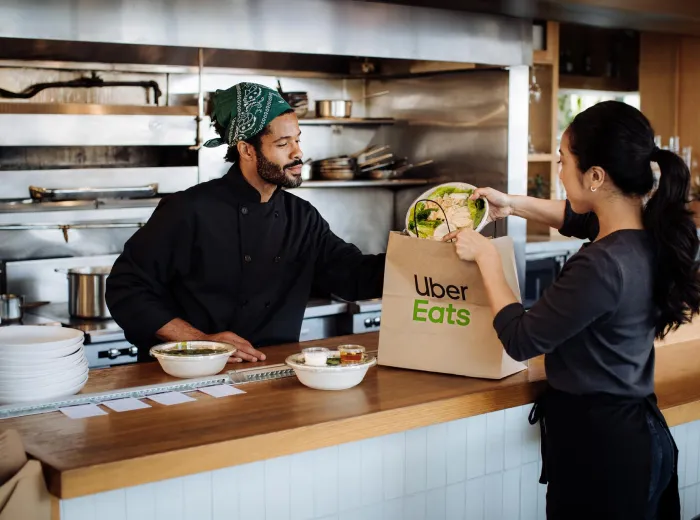

Best Restaurant Concepts to Open in Ohio | Comprehensive Guide
Ohio’s restaurant industry is booming, with its vibrant cities and diverse populations offering fertile ground for innovative dining concepts. Whether you’re drawn to the buzzing food scenes of Columbus, Cincinnati, or Cleveland, or you’re considering opening a unique spot in one of Ohio’s smaller towns, there’s no shortage of opportunities to carve out your niche in this dynamic market. Ohio’s growing appreciation for diverse cuisines, farm-to-table movements, and creative culinary experiences makes it an attractive location for restaurant entrepreneurs.
As you consider launching a new restaurant concept in Ohio, it’s crucial to understand the factors that can make your venture successful. The right concept can captivate local tastes while standing out in an increasingly competitive market. From sourcing local ingredients to creating a memorable brand, there are many elements to weigh. Moreover, with lower costs of living compared to coastal cities and a supportive business environment, Ohio provides fertile ground for restaurant owners to thrive.
This guide will explore the best restaurant concepts suited for Ohio’s unique market, providing you with practical insights into key trends, potential challenges, and proven strategies for success. Whether you’re starting from scratch or revamping an existing idea, this comprehensive guide will help you navigate the essential steps to build a successful restaurant in Ohio.
Would you like to listen our deep-dive conversation about this article?
Why Ohio is a Hotspot for Restaurant Businesses
Ohio’s thriving restaurant scene is fueled by a combination of factors that make it an appealing place to open a dining establishment. From the state’s bustling urban centers to its more laid-back rural communities, Ohio offers a diverse market ready for new food concepts. Its low operating costs, supportive small business environment, and rich local culture make it an ideal location for both first-time restaurateurs and experienced operators.
Growing Food Scene in Major Ohio Cities
Ohio’s largest cities are experiencing a culinary renaissance, driven by a mix of tradition and innovation.
- Columbus: Known as a hub for food innovation, Columbus is home to a vibrant culinary scene that embraces both creative startups and established dining institutions.
- Cincinnati: This city offers a mix of historic eateries and modern dining trends, balancing the old with the new to attract both tourists and locals alike.
- Cleveland: A culinary destination where eclectic food concepts thrive, Cleveland’s restaurant scene is growing rapidly, offering unique opportunities for new ventures.
Benefits of Opening a Restaurant in Ohio
Opening a restaurant in Ohio comes with a variety of benefits that make it attractive to new business owners.
- Low Cost of Living and Competitive Lease Rates: Ohio’s lower-than-average cost of living extends to more affordable real estate and operational costs, allowing restaurant owners to allocate more resources to their business.
- Diverse Customer Base with Varied Tastes: The state’s cultural diversity means there is a demand for a wide range of cuisines, from ethnic food to comfort dining, offering restaurant owners a broad customer base to tap into.
- Supportive Environment for Small Business Growth: Ohio provides numerous resources for small businesses, including grants, tax incentives, and business development programs that can help entrepreneurs succeed.
Key Trends in Ohio’s Dining Industry
Understanding the current trends is crucial for establishing a successful restaurant that resonates with Ohio diners.
- Local Sourcing and Farm-to-Table Movements: There is a growing preference for locally sourced ingredients, with many Ohioans valuing farm-to-table dining experiences that support local agriculture.
- Rise of Delivery-First Restaurants and Cloud Kitchens: With the increasing demand for food delivery, many restaurant owners are adopting delivery-first models or launching cloud kitchens to reduce overhead costs while meeting customer preferences.
What Makes a Great Restaurant Concept in Ohio?
Choosing the right restaurant concept is crucial for success, especially in Ohio’s competitive and diverse food scene. To thrive, your concept must align with the state’s demographic trends, local preferences, and competitive landscape. Understanding what makes Ohio unique will help you craft a restaurant concept that stands out, resonates with customers, and is positioned for long-term success.
Understanding the Ohio Market Demographics
Knowing who your potential customers are is key to shaping your restaurant concept.
- Income Levels and Their Impact on Menu Pricing: Ohio features a wide range of income levels across its cities and towns. Tailor your pricing to fit the spending power of your target demographic, balancing affordability with perceived value.
- Adapting to Regional Preferences in Food: Ohioans appreciate comfort foods, but they’re also open to trying new and innovative dishes. Consider offering local favorites like pierogies or chili, but give them a unique twist to attract foodies and traditionalists alike.
Evaluating the Competition
Studying your competitors gives you insights into what works—and what doesn’t—in Ohio’s restaurant market.
- Learning from Established Local Favorites: Analyze the success of existing popular restaurants in your area. Are they thriving because of their unique concept, exceptional service, or community engagement? Understanding their strengths can help you identify opportunities to differentiate.
- Finding Gaps in the Market to Fill: By evaluating the existing restaurant landscape, you can identify underserved niches, such as global cuisines not commonly found in Ohio or innovative dining experiences like interactive meals or DIY cooking stations.
Building a Concept Around Ohio’s Culture and Identity
Ohio’s rich culture and regional pride can serve as the backbone for your restaurant concept.
- Ohio’s Love for Comfort Foods and Regional Specialties: Ohioans have a deep love for comforting, hearty meals, often tied to their German, Polish, and Appalachian roots. Featuring locally beloved dishes with a contemporary twist could help you build a loyal customer base.
- Integrating Local Art and Music into Your Brand: Restaurants in Ohio often double as cultural hubs, offering live music or showcasing local art. By tying your restaurant concept to Ohio’s vibrant arts scene, you can create a memorable dining experience that feels distinctly local.
By understanding Ohio’s market, learning from local competition, and tapping into the state’s culture, you can create a restaurant concept that resonates with customers and stands out in a crowded field.
Top Restaurant Concepts to Consider in Ohio
Ohio’s diverse food scene and customer base make it an ideal location for a wide range of restaurant concepts. From health-conscious diners to those seeking comfort food, the opportunities are plentiful for restaurateurs to tap into emerging trends and satisfy local tastes. Below are some of the best restaurant concepts to consider when opening a business in Ohio, each catering to different market needs and preferences.
Farm-to-Table Restaurants
With Ohio’s rich agricultural landscape, farm-to-table restaurants are increasingly popular.
- Why Farm-to-Table Works Well in Ohio: The state’s abundance of local farms allows restaurants to source fresh, seasonal ingredients. Consumers in Ohio increasingly prefer locally sourced food that supports their community.
- How to Source Locally and Build Partnerships with Ohio Farmers: Establish connections with local farmers and co-ops to create a menu based on seasonal availability. Highlight your sourcing practices in your branding to appeal to eco-conscious customers.
Craft Breweries and Gastropubs
Ohio’s thriving craft beer industry makes gastropubs and craft breweries a highly attractive option.
- Ohio’s Thriving Craft Beer Industry: A Perfect Fit: Cities like Columbus and Cleveland are hubs for craft breweries, and pairing locally brewed beers with creative food menus is a winning combination.
- Creating a Menu That Pairs with Ohio’s Best Brews: Focus on a menu that complements the flavors of craft beers, offering items like gourmet burgers, artisanal pizzas, and creative small plates.
Vegan and Plant-Based Restaurants
As demand for healthier and more sustainable dining options grows, vegan and plant-based restaurants have become highly sought after.
- Rising Demand for Health-Conscious Dining Options: More Ohioans are seeking plant-based and vegan-friendly meals, especially in larger cities. These establishments appeal not only to vegans but also to those interested in clean eating and sustainability.
- Tips for Creating a Vegan-Friendly Menu That Appeals to All: Include familiar dishes made with plant-based ingredients, such as vegan burgers, dairy-free desserts, and seasonal salads, to attract a broader audience.
Quick Service and Fast-Casual Concepts
Busy Ohioans love the convenience of fast-casual and quick-service dining options, especially when paired with quality food.
- Fast-Casual Trends that Work in Ohio’s Cities: Concepts like build-your-own bowls, gourmet sandwiches, and healthy fast food are increasingly popular in areas with a high density of working professionals and students.
- How to Stand Out with Convenience and Quality: Offer high-quality, fresh ingredients with a focus on speed and convenience. Use technology for mobile ordering and seamless pickup or delivery options to meet customer demands.
Ethnic and Fusion Restaurants
Ohio’s increasingly diverse population is creating demand for more varied dining experiences, particularly ethnic and fusion cuisines.
- Tapping into Ohio’s Diverse Communities for Unique Menus: Consider introducing ethnic cuisines such as Indian, Ethiopian, or Middle Eastern, which are still relatively underrepresented in some Ohio markets.
- Successful Fusion Concepts That Are Trending: Combine different culinary traditions to create fusion dishes that appeal to adventurous eaters. Think Korean-Mexican tacos or Italian-Asian fusion, which can create buzz and differentiate your restaurant.
These top restaurant concepts are tailored to Ohio’s unique market dynamics, catering to both the state’s traditional tastes and emerging trends. Each concept provides an opportunity to tap into specific customer preferences, helping you craft a successful and distinctive dining experience.
Steps to Launch a Restaurant Concept in Ohio
Launching a restaurant in Ohio requires a strategic approach to ensure that your concept is successful. From conducting thorough market research to securing the necessary permits, there are several key steps that will set the foundation for your business. Below, we outline the most important actions you need to take when preparing to open a restaurant in Ohio.
Conducting Market Research for Your Chosen Concept
Market research is essential for determining whether your restaurant concept will thrive in Ohio.
- Analyzing Competitors and Identifying Target Audience: Understand the local competition by visiting similar restaurants and noting their strengths and weaknesses. Identify your target customer demographic based on factors like age, income, and dining preferences.
- Surveying Local Consumer Preferences: Use surveys, focus groups, or online tools to gather insights into what potential customers in your area are looking for. This can help you fine-tune your menu and concept to meet their expectations.
Crafting a Business Plan
A solid business plan is your roadmap to success, covering everything from finances to operations.
- Outlining Costs, Revenue Projections, and Milestones: Include a detailed breakdown of your expected startup costs (e.g., real estate, equipment, staffing) and projected revenue. Set short-term and long-term milestones to track your progress.
- Securing Financing and Understanding Ohio’s Business Incentives: Explore options for funding, such as loans, investors, or grants specific to Ohio’s restaurant industry. Ohio offers tax incentives and other financial support for small businesses that can help reduce startup costs.
Navigating Ohio’s Restaurant Permits and Licenses
Getting the correct permits and licenses is crucial for legal operation in Ohio.
- Health Permits, Alcohol Licensing, and Zoning Laws: Research local health department requirements for food safety, as well as zoning laws to ensure your restaurant is in a suitable location. If you plan to serve alcohol, obtaining a liquor license is another key step.
- Steps to Stay Compliant with Ohio’s Regulations: Stay up-to-date with local, state, and federal regulations to avoid fines or shutdowns. This includes food safety standards, employee labor laws, and fire safety codes.
Finding the Ideal Location in Ohio
The success of your restaurant largely depends on its location, as foot traffic and accessibility are crucial.
- Best Neighborhoods for Each Concept Type: Whether you’re opening a quick-service restaurant or a fine-dining establishment, certain Ohio neighborhoods are better suited for different concepts. Urban areas like Columbus and Cleveland are great for innovative and fast-casual spots, while suburban areas may prefer family-style dining.
- Factors to Consider: Foot Traffic, Parking, and Visibility: Choose a location with high foot traffic and visibility to attract passersby. Ensure ample parking and easy accessibility to encourage repeat business.
Building a Strong Brand Identity
Your restaurant’s brand is more than just a name and logo—it’s the overall experience you offer.
- Creating a Concept Story That Resonates with Ohioans: Craft a narrative that ties your restaurant’s concept to Ohio’s culture, local tastes, or history. Whether it’s promoting local ingredients or reflecting the state’s unique heritage, a compelling brand story can attract loyal customers.
- Designing an Inviting Interior with Local Flare: Invest in a design that reflects your brand. Incorporate local art, music, or cultural elements that make your restaurant feel part of the Ohio community, enhancing the customer experience.
These steps will guide you through the essential phases of launching a restaurant in Ohio, from the initial market research to creating a strong brand identity that resonates with local customers. By following these guidelines, you can set up your business for long-term success in the state’s dynamic restaurant industry.
Marketing Your Restaurant Concept in Ohio
Marketing is a critical component of running a successful restaurant in Ohio. With a diverse customer base and various dining preferences, it’s important to tailor your marketing strategies to reach your target audience effectively. By leveraging digital platforms, local advertising, and community engagement, you can build a strong presence that drives traffic to your restaurant.
Leveraging Social Media for Restaurant Growth
Social media is one of the most effective tools for promoting your restaurant in Ohio.
- Instagram, Facebook, and TikTok Strategies That Work in Ohio: Share high-quality photos of your food, behind-the-scenes content, and customer experiences on platforms like Instagram and TikTok. Use Facebook for local event promotions and targeted ads to attract nearby customers.
- Engaging with the Local Community and Influencers: Partner with Ohio-based food bloggers, influencers, and local personalities to expand your reach. Hosting live events or social media contests can also help increase engagement and visibility.
SEO and Online Visibility
Search engine optimization (SEO) is essential for making sure your restaurant shows up in online searches.
- Optimizing Your Website for Ohio Restaurant Searches: Use relevant keywords such as “best restaurants in Ohio,” “farm-to-table dining Ohio,” or “Ohio vegan restaurants” to rank higher in local searches. Ensure your website is mobile-friendly and easy to navigate.
- How to Get Featured on Ohio Food Blogs and Local Guides: Collaborate with local food writers and bloggers to get reviews or mentions in restaurant directories. Positive reviews on Google, Yelp, and TripAdvisor can significantly improve your online reputation and SEO rankings.
Local Advertising Strategies
While digital marketing is important, traditional advertising still plays a role in reaching Ohio’s diverse population.
- How to Utilize Print and Radio Advertising in Ohio’s Cities: Print ads in local newspapers, food magazines, or city guides can help you reach residents who may not be active on social media. Radio ads, especially during peak commuting hours, are another way to increase visibility.
- The Power of Word-of-Mouth and Referral Programs: Encourage your customers to spread the word by offering referral discounts or special promotions. Positive word-of-mouth remains one of the most effective marketing tools in the restaurant industry.
Creating a Loyal Customer Base
Building a loyal customer base is key to long-term success, especially in Ohio’s competitive dining market.
- Offering Loyalty Programs that Connect with Ohioans: Implement loyalty programs that reward frequent customers with discounts, free meals, or exclusive offers. Apps and digital platforms make it easy to manage these programs while keeping customers engaged.
- Hosting Events and Collaborations with Local Artists or Musicians: Organize community events, live music nights, or art exhibitions that feature local talent. These events create a unique dining experience and foster a connection with Ohio’s vibrant arts community, encouraging repeat visits.
This section covers essential marketing strategies tailored to Ohio’s restaurant market, from leveraging social media and SEO to utilizing traditional advertising and community engagement. By executing a multi-channel marketing approach, you can build a strong presence and attract a loyal following for your restaurant.
Financial Considerations and Profitability in Ohio
Running a profitable restaurant in Ohio requires careful financial planning and a deep understanding of your cost structure. From initial startup expenses to ongoing operational costs, being aware of where your money is going—and how to maximize revenue streams—can be the difference between success and failure. This section covers the key financial considerations you need to account for when opening and running a restaurant in Ohio.
Understanding Startup Costs and Operating Expenses
Before opening your restaurant, it’s crucial to have a clear picture of all the startup and ongoing costs you’ll face in Ohio.
- Real Estate, Equipment, and Staffing Costs in Ohio: Real estate prices vary by city, with Columbus, Cincinnati, and Cleveland often having higher lease rates than smaller towns. Factor in the costs of kitchen equipment, furnishings, and renovations, as well as hiring and training staff.
- How to Create a Budget and Plan for Unexpected Expenses: Develop a comprehensive budget that includes a cushion for unforeseen expenses such as equipment breakdowns, fluctuating food prices, or seasonal dips in business. A solid financial plan helps avoid cash flow issues and keeps operations running smoothly.
Revenue Streams to Maximize Profit
Diversifying your income sources can help boost profitability, especially in a competitive market like Ohio.
- Offering Catering and Private Events: Many successful Ohio restaurants supplement their revenue by offering catering services or renting out their space for private events like corporate functions, weddings, or community gatherings.
- Capitalizing on Takeout and Delivery Services: With the rise in delivery and takeout, especially since the COVID-19 pandemic, offering these services can significantly increase your revenue. Partner with platforms like DoorDash, UberEats, or GrubHub to expand your reach.
Managing Cash Flow and Profit Margins
Ensuring steady cash flow and healthy profit margins is critical to the long-term viability of your restaurant.
- Key Financial Metrics for Restaurant Success: Keep a close eye on metrics like food cost percentage, labor cost percentage, and prime cost (the sum of food and labor costs). These metrics will help you understand your restaurant’s financial health and profitability.
- How to Maintain Profitability During Ohio’s Slow Seasons: Ohio experiences seasonal fluctuations in business, especially during colder months. Introduce seasonal menus, run special promotions, or offer delivery discounts to maintain steady sales and keep cash flow positive year-round.
By understanding the financial landscape and optimizing revenue streams, you can ensure that your restaurant remains profitable in Ohio’s competitive market. Proper planning and smart financial management are essential to achieving long-term success in the restaurant industry.
Common Challenges and How to Overcome Them
Running a restaurant in Ohio, like any business, comes with its share of challenges. From staffing issues to navigating the state’s seasonal fluctuations, understanding these obstacles is key to finding effective solutions. Below are some of the most common challenges restaurant owners in Ohio face, along with practical strategies for overcoming them.
Staffing and Employee Retention
One of the most significant challenges in Ohio’s restaurant industry is attracting and retaining skilled staff.
- Strategies for Hiring and Retaining Talent in Ohio’s Competitive Market: Offer competitive wages and benefits to attract top talent. Create a positive work environment by providing opportunities for growth, training, and career development, which can help reduce turnover.
- Employee Training Programs That Boost Performance: Invest in regular staff training to improve service quality and efficiency. Well-trained staff are more likely to stay long-term, reducing recruitment and training costs over time.
Handling Ohio’s Weather-Related Challenges
Ohio’s unpredictable weather can pose challenges, particularly for restaurants with outdoor seating or those dependent on foot traffic.
- Adapting to Seasonal Fluctuations in Customer Traffic: Prepare for slower business in colder months by introducing special promotions, hosting events, or offering delivery discounts to maintain steady sales.
- Outdoor Seating Considerations and Cold Weather Solutions: If your restaurant relies on outdoor seating during warmer months, invest in solutions such as patio heaters, tents, or enclosed spaces to extend the season and maximize seating capacity.
Maintaining Consistency in Food Quality and Service
Consistency is key to building a loyal customer base, but ensuring that quality doesn’t slip can be a challenge, especially as your restaurant grows.
- Establishing Systems for Quality Control: Create standardized recipes and procedures for every dish to ensure that food quality remains consistent across shifts. Regularly train staff on these standards to maintain high-quality service.
- How to Ensure a Positive Customer Experience Every Time: Encourage customer feedback through surveys or online reviews and use that input to improve service and food quality. Offer rewards or discounts to loyal customers to show appreciation and foster repeat business.
By anticipating and addressing these challenges, you can build a more resilient restaurant that not only survives but thrives in Ohio’s competitive landscape. Effective solutions in staffing, seasonality, and quality control can make all the difference in ensuring long-term success.
Success Stories: Ohio Restaurant Owners Who Made It Big
Ohio has produced some truly inspiring restaurant success stories, with local entrepreneurs turning unique concepts into thriving businesses. These stories can offer valuable lessons for aspiring restaurant owners looking to make their mark. By understanding what worked for others, you can apply these insights to your own venture and increase your chances of success.
Case Study 1: From Concept to Thriving Business in Columbus
A local entrepreneur in Columbus launched a small farm-to-table restaurant that quickly gained a following for its fresh, locally sourced ingredients.
- How They Chose the Right Concept and Grew Fast: By focusing on Ohio’s growing farm-to-table trend, the restaurant tapped into local consumers’ desire for fresh, sustainable food. They formed partnerships with local farmers, which helped build a loyal customer base that appreciated the transparency of sourcing.
- Key Takeaways: The owners used social media to share their farm partnerships, tell the story behind their ingredients, and promote their seasonal menus. This strategy attracted eco-conscious diners and foodies alike, helping the restaurant grow its reputation.
Case Study 2: A Small Town Success Story in Akron
In Akron, a couple opened a casual gastropub with a focus on craft beer and elevated comfort food, becoming a community staple.
- Lessons Learned from Building a Community-Centered Restaurant: The owners made a point of engaging with the local community through charity events, live music nights, and collaborations with local breweries. Their emphasis on creating a welcoming, community-centered atmosphere turned casual visitors into regulars.
- Key Takeaways: The restaurant’s success was fueled by its ability to adapt to local tastes, offering a balance of Ohio comfort food with gourmet twists. Their focus on customer experience and community involvement created a loyal customer base that spread word-of-mouth recommendations.
Case Study 3: A Vegan Pioneer in Cleveland
In Cleveland, a passionate restaurateur launched one of the city’s first fully vegan restaurants, catering to the growing demand for plant-based dining.
- How They Filled a Market Gap and Built a Loyal Customer Base: Recognizing the increasing trend toward plant-based diets, the owner saw an opportunity in Cleveland’s food scene, which lacked vegan options. By offering an innovative, flavorful menu that appealed to both vegans and non-vegans, they built a diverse and loyal customer base.
- Key Takeaways: The restaurant’s success came from its focus on inclusivity, ensuring the menu appealed to all dietary preferences. The owner also invested in creating a warm, inviting atmosphere and frequently hosted vegan community events, boosting visibility and customer loyalty.
Ohio presents an exciting opportunity for aspiring restaurateurs, offering a vibrant mix of growing cities, diverse communities, and emerging food trends. By carefully selecting a concept that resonates with the local market—whether it’s farm-to-table, a craft brewery, or a quick-service restaurant—you can tap into the state’s dynamic culinary landscape. With a focus on local preferences, thorough market research, and smart financial planning, Ohio’s restaurant scene provides ample room for innovation and success.
Launching and growing a restaurant in Ohio comes with its challenges, but by studying the strategies of successful restaurateurs and leveraging proven marketing tactics, you can build a brand that resonates with the local community. With the right concept, a strong marketing plan, and a commitment to delivering high-quality food and service, your restaurant has the potential to thrive in Ohio’s competitive dining market. The path to success is well within reach for those who are willing to plan strategically and adapt to the unique demands of this promising state.
ABOUT THE AUTHOR
Erkin Coban
Your Customers Deserve The Best
And we got Menuviel for them.
The fastest and easy-to-use online QR menu with 12+ unique features. Choose Menuviel and elevate your service quality to the next level.
Use free for the first 30 days.

In This Article

Free AI Tools for Restaurants
TRY NOW ➜

Add allergen and dietary badges
Enhance your customers’ dining experience by providing clear dietary badges and labels for each menu item.







